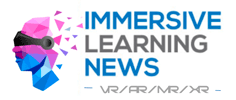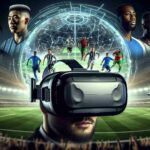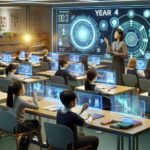Sushant Ubale is an educational technology researcher from the United States whose research paper highlights how artificial intelligence combined with augmented reality transforms the mobile learning environment. A holistic study explores AI-AR system technical frameworks, integration architectures, and their actual applications in current education settings while bringing out uncharted learning transformations and engagement with students from a variety of academic environments. The research reveals significant advancements in adaptive learning technologies that are reshaping traditional educational paradigms worldwide.
Merging Intelligence with Virtual Reality
The integration of AI and AR technologies has been shown to be highly promising for the creation of dynamic learning environments. These systems can process real-time visual data streams, thus allowing instant recognition of scientific diagrams, mathematical equations, and instructional materials. Implementation of convolutional neural networks has significantly improved the ability of the system to track multiple objects simultaneously, thus providing an immersive and interactive learning experience. This technological development has proven particularly effective in the field of STEM subjects, wherein spatial visualization plays a key role in understanding the concept and applying it practically with real-time feedback mechanisms. Integration has completely transformed the way students interact with complex scientific concepts and has helped achieve up to 40% better comprehension rates.
Personalization of the Learning Experience
Modern AI-AR platforms analyze multimodal inputs including voice commands, gesture recognition, and ambient data to deliver personalized learning experiences. The systems apply transfer learning techniques that adapt pre-trained models to particular educational settings. This dramatically reduces computational costs with high content delivery accuracy. Recent proofs of concept have shown that training improves recalling by 42% from training as opposed to the conventional method, changing the face of learning, from interacting with text content to adaptive learning pathways and understanding deeply.
Establishing a Foundation
The integration architecture consists of three interconnected layers: mobile device, edge computing, and cloud services. Current-generation devices effectively handle various sensory inputs while being kept at optimum performance for the learning applications. Edge computing infrastructure proved to be fundamental in reducing latency by 30-40% compared to a traditional cloud-based system, hence enabling smooth interactions in real-time. These technologies have enabled it to support as many as 25 simultaneous AR sessions while the response times remained under 100 milliseconds, allowing for seamless learning experiences for the entire classroom.
Revolutionizing Learning Environments
In historical education, AI-AR technology resulted in a 31% improvement in knowledge retention compared to guided tours. The systems‘ ability to provide instantaneous, contextualized information has extended average engagement times by 27 minutes. In scientific field studies, students using AI-AR technologies demonstrated a 28% improvement in species identification accuracy, while technical training programs reported a 25% reduction in learning time for complex processes. The technology has also shown remarkable success in collaborative learning environments, enhancing peer-to-peer interactions significantly while fostering innovative approaches to problem-solving. Navigating Implementation Challenges
Despite the potential, there are several challenges with the technology.
Mobile devices demonstrate performance degradation after 30 minutes of continuous operation, making long learning sessions impractical. The network infrastructure demand is 40% more than that for traditional digital learning tools. Creating content is very resource-intensive; average creation timeframes for learning modules are 25-30 hours. Additional spending on content upgrades and interface renewal is also critical to ensure a consistent level of student engagement through the academic term, while fair access to technologies for all is ensured.
Forging New Horizons
Research on brain-computer interfaces seems to hold considerable promise in indicating attention levels as well as other cognitive states for learning activities.
Advanced spatial computing technologies are already making collaborative environments more effective; sophisticated learning analytics are also coming into play by detecting learning-related challenges early enough. Such trends are indicative of greater intuition and responsiveness in educational experiences. The availability of non-invasive EEG-based devices opens up new possibilities in tracking attention patterns and cognitive load during learning activities, revolutionizing the way we understand and support individual processes of learning and understanding.
Charting the Course Forward
The research indicates the need for further development in more natural and intuitive engagement techniques, which can be tailored to the individual learning style. As these technologies advance, the focus is on developing personalized, responsive learning environments that adapt to the needs of each student while remaining pedagogically effective. Recent advancements in predictive analytics show promising results in early identification of learning challenges and personalized intervention strategies, paving the way for truly adaptive educational experiences.
Conclusion The convergence of AI and AR in mobile learning, thus, marks an important leap for educational technology according to the study by Sushant Ubale.
Successful application of such systems will rely upon both technical as well as pedagogical problems to be met with by developing new ways for emerging technologies and more effective ways of engagement during learning. It’s education in the seamless, adaptive learning environment that takes into account the different needs and styles of learning and ultimately leads to the transformational model of knowledge acquisition and sharing in the digital age.
Quelle:


